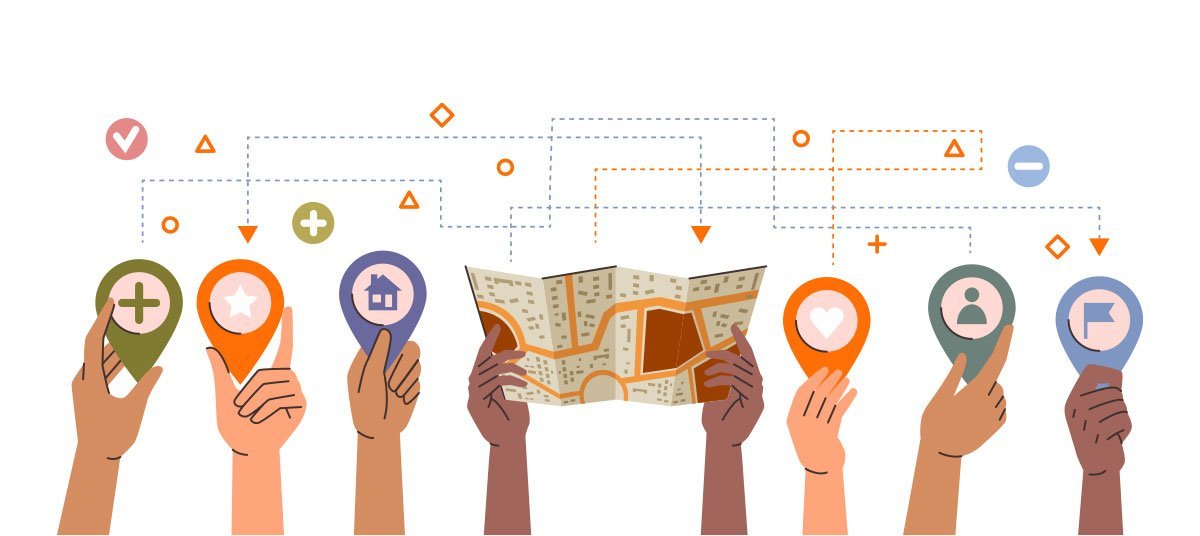Have you ever thought about what makes some brands stand out from the rest in today’s busy world? It’s not just about having a great product—it’s about how you take care of your customers at every step of their journey. From the moment they first discover you to the point where they’re excited to tell others, each interaction really counts.
Think of it like having a chat with a friend about how to make these moments matter. That’s what Customer Journey Optimization (CJO) is all about. It’s about making sure every step feels right, and I’m here to walk you through it, one step at a time.
What is the Customer Journey, Anyway?

Let’s break it down. The customer journey is basically every experience a person has when they interact with your brand. Picture it like a story where your customer is the hero. It starts with them becoming aware of your brand, considering their options, making a purchase, using the product or service, and finally, if all goes well, becoming a raving fan.
Here’s how the story unfolds:
- Awareness: This is where it all begins—your customer first hears about your brand. Maybe it’s through a Facebook ad, a recommendation from a friend, or they stumbled upon you in a Google search. First impressions matter, so this is where you want to really shine.
- Consideration: Now that they know about you, they’re weighing their options. They’re reading reviews, checking out your website, and maybe even comparing you to the competition. This is your chance to show them why you’re the best choice.
- Acquisition: Here’s the big moment—they’re ready to buy. Your job is to make this as smooth and easy as possible. No one likes a complicated checkout process.
- Implementation: They’ve made the purchase, and now it’s time to deliver. Providing top-notch support and ensuring they get the most out of their purchase is key to keeping them happy.
- Advocacy: If they love their experience, they’ll spread the word. They’ll tell their friends, leave glowing reviews, and maybe even share about you on social media. This is where your brand really starts to grow.
Why Mapping the Customer Journey is a Game-Changer
So, why bother mapping all of this out? Well, it’s like having a roadmap that shows you exactly where your customers are at every step of the way. It helps you understand what they need, where they might get frustrated, and how you can make their experience even better.
And when you know what’s working and what’s not, you can make adjustments that lead to happier customers—and that’s what it’s all about.
Getting to Know Your Customers

To create a great experience for your customers, you need to truly understand them. It’s about getting to know what matters to them, what they struggle with, and how you can make their journey with your brand smoother and more enjoyable.
Start with Research
Before you can optimize anything, you need to really understand your customers. This isn’t just about knowing their age or where they live (though that’s important too). It’s about getting into their heads and figuring out what they care about, what frustrates them, and what makes them tick.
- Surveys and Interviews: Ask your customers directly about their experiences. What do they love? What could be better? Their feedback is gold.
- Behavioral Data: Look at how they interact with your website or app. Which pages do they visit most? Where do they drop off? This data tells a story.
Create Buyer Personas
Think of buyer personas as detailed profiles of your ideal customers. These personas should reflect not just demographic info, but also their pain points, motivations, and preferred ways of interacting with your brand. With these personas in hand, you can customize your marketing and engagement strategies to hit all the right notes.
Keep Collecting Feedback
Customer needs and preferences change, so it’s important to keep the lines of communication open. Regularly collect feedback through surveys, reviews, and social media monitoring to stay on top of what your customers are thinking and feeling.
Mapping and Segmenting the Customer Journey

To really get a sense of what your customers go through, it’s important to map out every step of their journey with your brand and group them in ways that make sense. This lets you customize your approach and make their experience even better.
Customer Lifecycle Mapping
Imagine you’re drawing a map of the customer’s journey from start to finish. Each stage of their journey has its own touchpoints—like when they visit your website, call customer service, or read an email from you. Mapping these out helps you see the big picture.
Segmentation Strategy
Not all customers are the same, so it’s helpful to segment them into different groups. You might create segments based on demographics (like age or location), behavior (like purchase history), or psychographics (like values or lifestyle). This allows you to personalize your messaging and offer more relevant experiences.
Perform a Gap Analysis
Once you’ve mapped out the current customer journey, compare it to what the ideal journey looks like. Are there areas where customers are getting stuck or frustrated? A gap analysis helps you identify where things could be better and what you can do to fix them.
Proactive Engagement

Keeping your customers engaged requires more than just waiting for them to come to you. By being proactive, you can build stronger relationships, foster loyalty, and create lasting connections that keep your brand top of mind.
Personalize Every Interaction
Personalization is more than just a buzzword—it’s essential for creating meaningful connections with your customers. Use data from your CRM to customize your communications, whether it’s a personalized email, a targeted ad, or dynamic website content that changes based on who’s visiting.
Build Loyalty with Programs
Loyalty programs are a great way to keep customers coming back. Offer rewards that your customers will value, create tiered memberships that incentivize more engagement, and keep them updated on their status and rewards.
Stay Active on Social Media
Social media isn’t just about posting pretty pictures. It’s a place to engage with your customers, respond to their comments, and share content that resonates with them. The more active and responsive you are, the more connected your customers will feel to your brand.
Customer Journey Optimization Strategies

If you want your customers to feel valued, it’s important to focus on their experience. By personalizing their journey, making sure everything works smoothly, and using the right tools, you can make a real difference.
Make it Personal
The more personalized the experience, the better. Collect data on your customers and use it to segment your audience, deliver targeted content, and even predict what they might need next.
Create a Connected Experience
Your customers connect with your brand in different ways, whether online, in-store, or on social media. It’s important to make sure these experiences feel linked and consistent, so your customers enjoy a smooth journey no matter where they interact with you.
Measuring Success and Gathering Feedback

To keep improving your customer experience, it’s essential to measure how well your efforts are working and collect feedback regularly. This helps you understand what’s going well and where there’s room for improvement.
Track the Right Metrics
To know if your customer journey optimization efforts are working, you need to track the right metrics. Keep an eye on things like Net Promoter Score (NPS), Customer Effort Score (CES), conversion rates, and Customer Lifetime Value (CLV).
Regularly Review and Adjust
Optimization is an ongoing process. Regularly review your performance, analyze the data, and make adjustments as needed. The goal is continuous improvement, so don’t be afraid to change your strategies based on what you learn.
If you need help making sense of these numbers, our Marketing Analytics service at Analyze Right is here to support you. We’ll help you understand what the data is really saying so you can make smarter decisions and see better results.
Final Thoughts
Optimizing the customer journey is all about making sure every interaction your customers have with your brand is a positive one. It’s about being proactive, using data to drive your decisions, and always looking for ways to improve. When you get it right, your customers will not only stay loyal—they’ll become your biggest advocates.
At Analyze Right, we’re here to help you make the most of your customer journey. Our customized solutions are designed to meet your unique needs and deliver exceptional experiences that keep customers coming back. Ready to get started? Let’s chat today!


